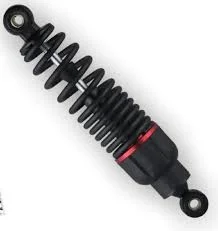
The angle of a reflective solar canopy plays a major role in how light moves across a site. The angle affects the quality of shade, the intensity of redirected light, and the energy that the panels may capture. In Dubai, designers depend on clear visual tools to test these angles before construction.
This helps them understand how the canopy will behave in the strong desert sun. Model making gives teams a way to explore angle options in a controlled and accurate way. It helps reduce guesswork during planning and improves the final outcome for the project.
How Physical Models Help Study Canopy Angles
The sun in Dubai shifts sharply between seasons. A small change in angle can shift shadows, reduce comfort, or increase heat. Designers need to fully understand these shifts. When teams use model making Dubai for solar canopy projects, they create scaled structures that match real proportions.
These models show how the canopy tilts toward the sun and how panels receive and reflect light. The physical model also helps test sunlight direction at different times of day. This gives teams a clearer picture of light movement compared to digital tools alone.
Using Light Simulation in Scaled Environments
A key part of studying canopy angles is the use of controlled lighting on the scaled setup. Designers place artificial light sources that represent the sun’s angle at morning, midday, and evening. The models respond to these sources the same way real structures would.
This method allows teams to see strong reflections, shade locations, and redirected beams. In a climate like Dubai, where glare can affect pedestrian comfort, this becomes an important step in planning. It also lets designers check safety conditions and ensure the canopy will not produce excessive brightness.
Angle Adjustment and Testing in Real Time
The ability to change the canopy angle directly on the model gives teams freedom to test multiple versions of the same design. The structure can be rotated or tilted by small degrees. In some projects, flexible joints are added so the canopy can move in real time.
This helps the team find a balance between reflection, shade, and energy goals. With this method, the team can quickly reject unfit angles and focus on the most efficient ones. This form of model making keeps the tests simple and avoids full digital recalculations.
Studying Heat and Shadow Movement
Dubai’s climate demands attention to heat control. A reflective solar canopy must offer shade without trapping heat below it. The scaled setup helps teams observe shadow length and shadow density. It also shows areas where light might bounce back into walking paths or nearby structures.
These small details are easy to detect on a physical model because reflections become visible under the right test light. The model surface reacts in a way that mirrors real-life conditions. As a result, angle decisions become more informed and safer for users.
Integration With Surrounding Spaces
Reflective solar canopies rarely stand alone. They are usually part of plazas, walkways, parking areas, or public parks. The angle of the canopy affects nearby buildings, trees, and open spaces. Model making helps teams place the canopy inside a larger site model to test how the angle interacts with the full environment. This approach shows where reflections may reach and whether the canopy affects façade temperatures of nearby structures. It also reveals if the shade overlaps with walking paths in the way planners expect. With this method, the angle becomes part of a larger urban study, not just a structural choice.
Understanding Public Comfort Through Visual Study
Comfort is important in outdoor public spaces. A reflective solar canopy must create shade that supports movement and rest. With a scaled model, planners can observe how the canopy affects comfort zones. They check glare height and shade density.
They also test if the tilt causes unwanted reflections at eye level. These observations help them adjust the angle to improve the user experience. This reduces the risk of creating a canopy that looks impressive but does not serve daily needs.
Supporting Communication With Stakeholders
Reflective canopy projects often involve developers, engineers, and public authorities. Angle decisions must be clear to each group. Physical models help teams communicate ideas without technical drawings. A simple tilt demonstration shows how the canopy behaves.
This makes the process faster and more transparent. Since Dubai promotes innovation in public and private spaces, this visual form of explanation supports smoother approval. It gives everyone a reliable picture of the final outcome.
Improving Accuracy With Combined Digital and Physical Testing
While digital tools offer detailed calculations, physical testing often reveals angle issues that software models miss. The blend of digital and model making produces stronger results. Designers can test the angle digitally and then confirm it on the scaled model. This two-step process reduces errors. It helps teams find angle improvements that may not appear in digital light simulations. The combined process is now common in many advanced projects in Dubai.
Conclusion
The angle of a reflective solar canopy has a direct impact on shade quality, comfort, and energy outcomes. Model making gives Dubai designers a powerful method to study these angles in depth.
It allows teams to test real light behavior, explore reflections, adjust tilts, and observe changes across the full site. The process helps avoid design mistakes and improves the quality of open spaces across the city. By using model making throughout the planning stage, projects achieve better accuracy, stronger performance, and a safer environment for users.




